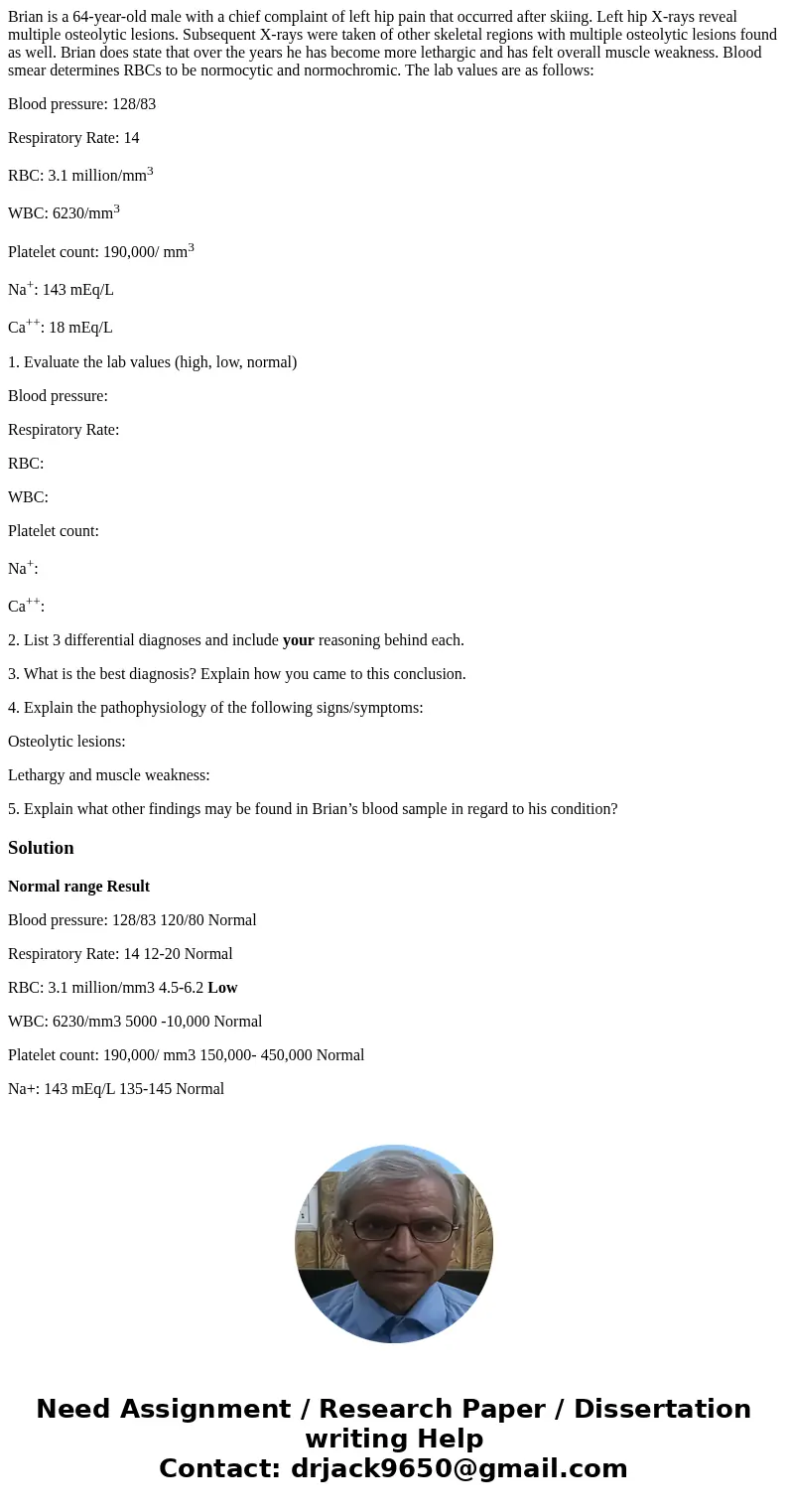Brian is a 64yearold male with a chief complaint of left hip
Brian is a 64-year-old male with a chief complaint of left hip pain that occurred after skiing. Left hip X-rays reveal multiple osteolytic lesions. Subsequent X-rays were taken of other skeletal regions with multiple osteolytic lesions found as well. Brian does state that over the years he has become more lethargic and has felt overall muscle weakness. Blood smear determines RBCs to be normocytic and normochromic. The lab values are as follows:
Blood pressure: 128/83
Respiratory Rate: 14
RBC: 3.1 million/mm3
WBC: 6230/mm3
Platelet count: 190,000/ mm3
Na+: 143 mEq/L
Ca++: 18 mEq/L
1. Evaluate the lab values (high, low, normal)
Blood pressure:
Respiratory Rate:
RBC:
WBC:
Platelet count:
Na+:
Ca++:
2. List 3 differential diagnoses and include your reasoning behind each.
3. What is the best diagnosis? Explain how you came to this conclusion.
4. Explain the pathophysiology of the following signs/symptoms:
Osteolytic lesions:
Lethargy and muscle weakness:
5. Explain what other findings may be found in Brian’s blood sample in regard to his condition?
Solution
Normal range Result
Blood pressure: 128/83 120/80 Normal
Respiratory Rate: 14 12-20 Normal
RBC: 3.1 million/mm3 4.5-6.2 Low
WBC: 6230/mm3 5000 -10,000 Normal
Platelet count: 190,000/ mm3 150,000- 450,000 Normal
Na+: 143 mEq/L 135-145 Normal
Ca++: 18 mEq/L 4.3-5.3 High
2. Differential diagnosis
-Hypercalcemia- occurs when the blood calcium level is too high than normal. Too high calcium causes weakening of bones and also kidney stones.
- A very low red blood cell count might also indicate aplastic anaemia
- low red blood cell count might also indicate cancer.
3. Hypercalcemia and aplastic anaemia are conditions that come individually, but not as a combination. The best possible diagnosis might be a cancer in this case, might be multiple myeloma. Low blood counts and abnormally high calcium levels are prime symptoms of the same. Also referred to as the myeloma of the bone marrow. The other symptoms cannot be judged from the given data.
4. Osteolytic lesions : lytic lesion of the bone. This occurs caused by a malignant or benign disease I.e. Cancer. Bone destruction with severe bone pain is observed. Lethargy and muscle weakness observed due to the excessive calcium levels.


 Homework Sourse
Homework Sourse